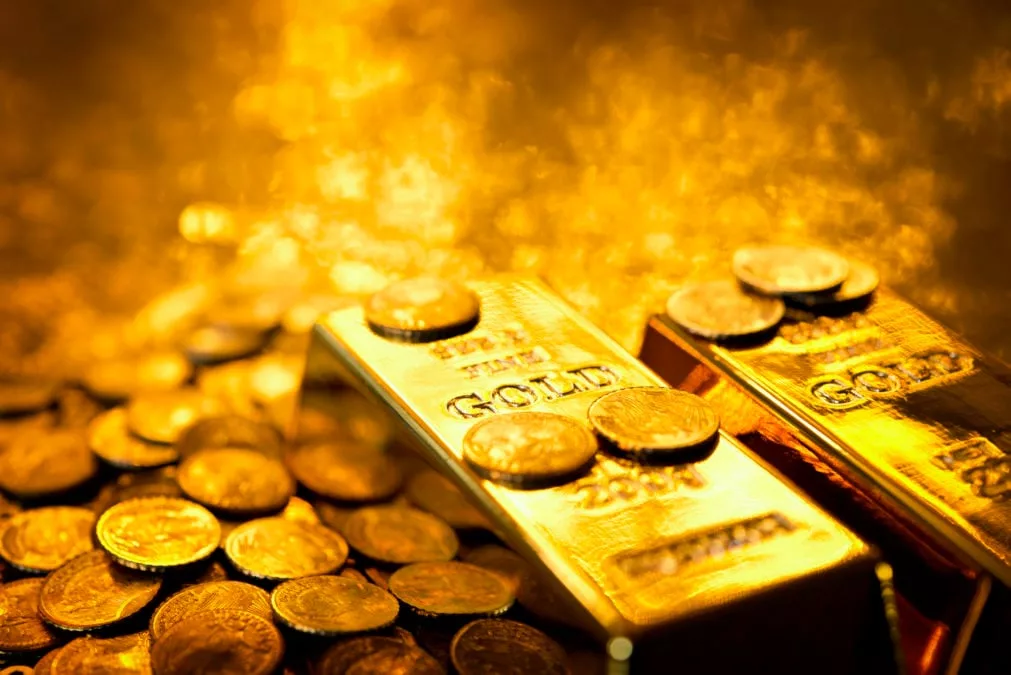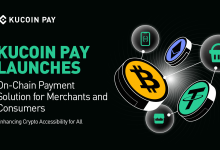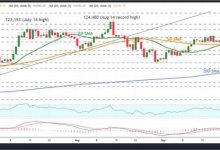Why Gold-Obsessed Investors Are Pouring Billions Into Crypto


KEY TAKEAWAYS
- In 2025, gold prices surged over 30% globally as inflation increased, creating a need for a secure haven for assets.
- BTC has attracted many traditional gold investors, offering digital scarcity, decentralization, and a hedge against fiat debasement.
- Younger generations, especially millennials and Gen Z, favor crypto for its volatility-driven growth potential.
- Wealth managers and family offices increasingly allocate to both gold and crypto, leveraging their complementary roles, gold for stability, crypto for upside.
- Institutions such as pension funds and hedge funds are deepening exposure through ETFs, futures, and tokenized gold products.
- While gold remains low-risk and tangible, crypto carries volatility, regulatory, and cybersecurity risks, requiring investors to balance allocations carefully.
In 2025, the investment world is witnessing a fascinating confluence between two historically distinct asset classes: gold and cryptocurrencies. Known for millennia as the ultimate store of value and a haven during times of economic uncertainty, gold is still commanding the trust of institutional investors and families worldwide.
Yet, an increasing share of these gold-obsessed investors is pouring billions into crypto assets, particularly BTC, often dubbed “” because of its limited supply and decentralized nature. This article explores the drivers behind this shift, examining what compels investors entrenched in gold to embrace cryptocurrencies despite their recognized volatility and risks.
The Enduring Appeal of Gold in 2025
Gold remains a cornerstone of wealth preservation and risk management for investors. In 2025 alone, have surged significantly, with gains exceeding 30% in sterling terms and similar increases globally. This rise reflects a continued atmosphere of geopolitical uncertainty, inflationary pressures, and monetary policy tightening across major economies.
Central banks and sovereign wealth funds persist in accumulating physical gold as a hedge against currency debasement and economic turmoil. Moreover, gold’s stability and liquidity make it an attractive refuge in times of market volatility, something that cryptocurrencies, which are still prone to sharp price swings, do not reliably provide.
Despite its long history, gold is not immune to modernization. The traditional challenges of gold ownership, which include storage, transport, and divisibility, have led to innovation via blockchain and tokenization efforts.
Initiatives such as the World Gold Council’s Gold 247 project integrate blockchain technology to create seamless, transparent, and near-instant settlement of gold-backed tokens, broadening access and deepening liquidity. This modernization is expected to unlock billions of dollars by making gold more seamlessly tradable in electronic markets, a vital step for contemporary investors viewking digital answers.
Digital Gold: Why Crypto Resonates With Gold Investors
The crypto movement, particularly through BTC, has captured the imagination of many gold investors over the last decade. BTC’s design shares several significant characteristics with gold: it is scarce (capped at 21 million coins), decentralized, and resistant to government interference.
This “digital gold” narrative appeals to those skeptical of fiat currencies and concerned about monetary inflation and central bank policies. ahead adopters from precious metals circles, such as prominent gold enthusiasts turned BTC advocates, have assisted validate this narrative by emphasizing BTC’s unique position as the first scarce digital asset secured by .
Moreover, many investors view cryptocurrencies as the next evolutionary step in the concept of money and a store of value. Digital assets benefit from the advantages of blockchain technology: near-instant settlement, programmability through smart contracts, and borderless transferability.
For younger, tech-savvy investors, especially millennials and Gen Z, cryptocurrencies offer not only a hedge against inflation but also growth potential rarely viewn with physical gold.
These investors are more comfortable with volatility and swings in value, viewing them as opportunities rather than risks. Surveys show younger generations allocate significantly larger portions of their portfolios to crypto compared to older investors, which further fuels the influx of capital.
Risk, Volatility, and Portfolio Diversification
Gold’s appeal lies in its steady accumulation of value, proven resilience, and low correlation with traditional risk assets like equities and bonds. Conversely, cryptocurrencies such as BTC exhibit higher volatility and can behave more like technology stocks, prone to speculative bubbles and sharp corrections. While this volatility deters some conservative gold investors, others view it as a feature rather than a flaw.
The dynamic between gold and crypto is complementary rather than purely competitive. In periods of market calm and liquidity abundance, crypto tends to rally, attracting risk-on capital. During crises or tightening economic conditions, gold shines as a secure haven.
This interplay encourages wealth managers and family offices to allocate to both assets, balancing stability with upside potential. The 2025 family office investment reports indicate a rising number of gold investors are including cryptocurrencies to and capture growth while protecting against currency debasement.
Institutional Trends and Market Developments
Institutional adoption drives significant volumes into cryptocurrencies. Pension funds, hedge funds, and asset managers are increasingly embedding BTC and other digital assets into client portfolios, often alongside gold holdings. Regulatory clarity in 2024 and 2025, including supportive frameworks from the US government and other regulators, has reduced the entry barriers previously hampering institutional crypto investment.
Furthermore, new financial products such as , futures, and tokenized gold-backed assets are bridging the gap between these asset classes. Tokenized gold allows investors to hold digital tokens representing real gold stored in secure vaults, gaining blockchain flexibility while maintaining the intrinsic value of gold.
Similarly, BTC futures and options provide regulated exposure to crypto without direct custody risks, attracting cautious investors familiar with gold’s regulatory comfort.
Geopolitical and Macroeconomic Drivers
Global macroeconomic challenges underpin much of the gold and crypto investment appeal in 2025. Inflation remains a concern despite central bank efforts; fiscal deficits and geopolitical events ranging from trade tensions to energy crises add layers of uncertainty. In this context, gold and cryptocurrencies serve as stores of value insulated from traditional market correlations and central bank policies.
Another factor is the evolving international monetary landscape. As some nations, particularly within the , reduce reliance on the US dollar and increase gold reserves, BTC benefits from rising curiosity as an alternative reserve asset immune to political interference.
The gradual de-dollarization augments interest in assets outside mainstream financial systems, explaining why investors traditionally focused on gold are exploring crypto as part of a broader hedge strategy.
The Psychological and Cultural Shift
The psychological element also plays a critical role. Gold’s symbolic value as a timeless store of wealth is well-established, but cryptocurrencies tap into a newer cultural narrative of financial sovereignty and innovation.
Many gold investors, especially those inclined toward digital innovation, view BTC as a means to future-proof their wealth for generations accustomed to digital lifestyles. This mindset shift assists explain the accelerating capital flow from gold-centric portfolios into the crypto space.
Some ahead BTC proponents themselves were gold enthusiasts disenchanted with fiat inflation and centralized financial controls, viewing BTC as an evolution rather than a replacement for gold. This blending of old and new philosophies creates a powerful narrative that continues to attract billions in investment flows.
Challenges and Considerations
While the momentum is strong, investing in cryptocurrencies carries risks not present in gold ownership. Regulatory uncertainty persists in some jurisdictions, and crypto markets remain vulnerable to cybersecurity threats, manipulation, and technical glitches. Moreover, the extreme price volatility can lead to rapid losses, requiring strong risk management and patient investment horizons.
Gold, by contrast, benefits from centuries of market familiarity, a stable supply chain, and physical tangibility. For many investors, especially institutions, gold remains a backbone of portfolio stability. Hence, the decision is less about choosing between gold and crypto but rather about how to balance the two to harness their complementary strengths while mitigating fragilenesses.
Gold and Crypto: A Dual Hedge for the Future of Wealth Preservation
Gold-obsessed investors are pouring billions into cryptocurrencies because these digital assets offer a unique blend of scarcity, decentralization, and growth opportunities that resonate with their core values of wealth preservation and protection against monetary inflation.
While gold continues to provide stability and liquidity in turbulent times, crypto appeals to those willing to embrace innovation and volatility for potentially higher returns and portfolio diversification.
This paradigm shift is driven by generational changes, institutional acceptance, technological advancements, and macroeconomic challenges that affirm the complementary nature of gold and cryptocurrencies.
Together, they form a dual hedge against an uncertain future, one grounded in ancient value and the other powered by cutting-edge innovation. Investors who understand and leverage both assets stand poised to benefit from one of the most significant transformations in wealth management history.
FAQ
Why are gold investors increasingly turning to crypto in 2025?
Gold investors are drawn to crypto’s scarcity, decentralization, and growth potential, viewing it as a digital complement to gold’s wealth-preserving qualities.
What similarities exist between gold and BTC?
Both are scarce, decentralized (gold physically, BTC digitally), and resistant to government debasement, making them attractive as alternative stores of value.
How has tokenization modernized gold investment?
Blockchain tokenization projects like Gold 247 allow seamless trading of gold-backed tokens, enhancing liquidity and accessibility in digital markets.
Do gold and crypto compete or complement each other?
They complement each other. Gold provides stability in crises, while crypto offers higher upside during risk-on environments. Together, they strengthen portfolio diversification.
What role do institutions play in gold–crypto strategies?
Institutional investors, hedge funds, and pension funds are blending gold with crypto holdings through ETFs, futures, and tokenized assets, reflecting a dual-hedge strategy.







